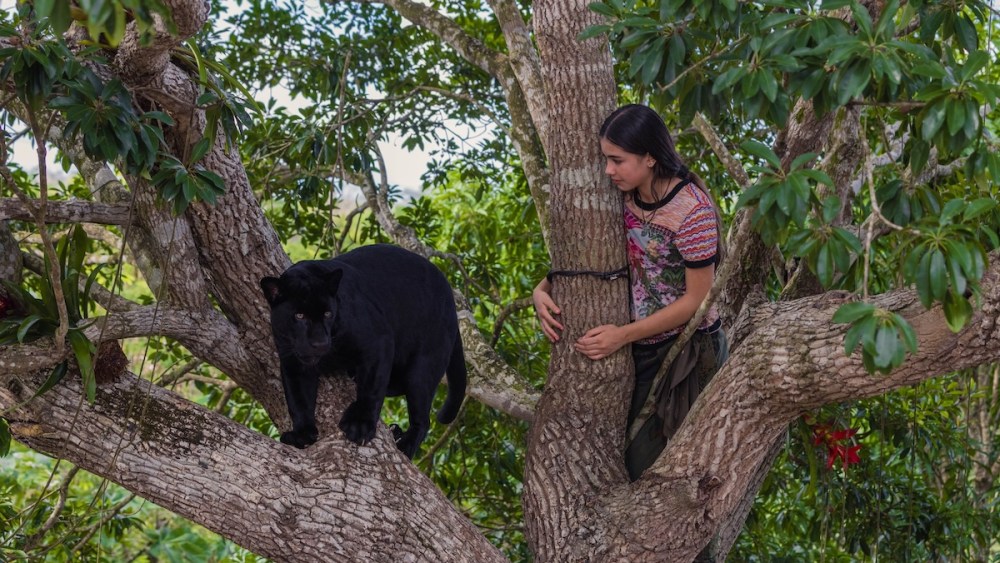Introduction to “Autumn and the Black Jaguar”
Director Gilles de Maistre, known for his family-friendly films with an environmentalist message, has added another title to his repertoire with “Autumn and the Black Jaguar.” After the mixed receptions of earlier works like “Mia and the White Lion” and “The Wolf and the Lion,” this latest installment may be met with similar skepticism. While it aims to highlight the importance of wildlife conservation, the film’s execution raises questions about narrative quality and its ability to engage viewers meaningfully.
Plot Summary
The screenplay, penned by Prune de Maistre, follows the story of Autumn (portrayed by Lumi Pollack), a 14-year-old girl living in New York City under the care of her single father, Saul (Paul Greene). The narrative employs clunky flashbacks to revisit Autumn’s idyllic childhood spent in the Amazon rainforest. The film fails to clearly define the rainforest’s location, portraying it generically as an “exotic” locale where Autumn grew up alongside her companion, Hope, a black jaguar. The film uses two real rescue jaguars to depict Hope at various ages, grounding some of its narrative in reality.
The Call to Adventure
Tension mounts when poachers kill Hope’s mother, prompting Saul to relocate his daughter to a seemingly safer environment. However, when Autumn discovers letters from Chief Oré (played by Wayne Charles Baker), she learns that Hope remains in danger. This revelation sets off Autumn’s quest back to the Amazon in an effort to save her beloved jaguar. The call to adventure is primarily driven by her emotional bond with Hope, but the film’s structure makes this imperative feel less compelling than it should be.
The Hurdles Faced
Autumn’s biology teacher, Anja (Emily Bett Rickards), who suffers from agoraphobia, attempts to intervene in what she perceives as a reckless journey by buying a last-minute ticket to the Amazon. This plot development not only feels implausible but raises further questions about the characters’ motivations. why Anja doesn’t notify Autumn’s father or warn the airline about the unaccompanied minor also remains an enigma. The narrative suffers from logical inconsistencies that detract from its credibility.
Cultural Misrepresentation
Upon reaching their destination in the Amazon, the film falters further by mishandling the portrayal of Anja and Chief Oré’s community. Anja often appears as a caricature of a woman struggling with her mental health rather than a nuanced character, while Chief Oré’s tribe is depicted through an unsatisfactory lens—one that lacks authenticity or respect for their cultural identity. The film’s costuming and characterization come off as generic and offensive, failing to present the richness of Indigenous cultures.
The Emotional Disconnect
If “Autumn and the Black Jaguar” had invested more in developing Autumn and Hope’s relationship, it could have captured a relatable emotional thread for both adult and younger viewers. Instead, their reunion is marked by a deflating lack of depth, presenting a scenario that is jarringly underwhelming compared to the authentic emotional ties often found in similar narratives. With the stakes underplayed, the message gets lost in a narrative that resembles cheap talking points rather than a heartfelt call to action.
Exploring Environmental Themes
The film does touch upon critical issues such as deconstruction, poaching, and extinction risks faced by jaguars. However, it presents these vital topics in a manner reminiscent of an afterschool special rather than engaging storytelling, which is troubling given its young target audience. The hazy portrayal of the rainforest as a playground and the problematic representation of the relationship between humans and wildlife raises concerns about the correct messaging regarding environmental preservation.
Conclusion
While director Gilles de Maistre has engaged in commendable work in animal conservation, “Autumn and the Black Jaguar” does not live up to its potential as a meaningful narrative on wildlife protection. The film’s shortcomings in character development, cultural representation, and emotional engagement ultimately detract from its noble cause. Without a strong foundation to explore the urgent themes of conservation and human-animal relationships, it risks isolating its young audience rather than inspiring them toward activism in wildlife protection.
FAQs
What age group is “Autumn and the Black Jaguar” suitable for?
The film is targeted primarily at children and family audiences; however, the treatment of themes may not be appropriate for younger viewers.
Is the film based on a true story?
While the film draws inspiration from real-life issues such as wildlife conservation, the story itself is fictional.
What are some critical themes in the film?
The film attempts to address themes of wildlife conservation, poaching, and the bond between humans and animals, though it struggles to convey these effectively.
Who are the main cast members of the film?
The main cast includes Lumi Pollack as Autumn, Paul Greene as Saul, Emily Bett Rickards as Anja, and Wayne Charles Baker as Chief Oré.
What is the director’s background?
Gilles de Maistre is known for directing family-friendly films with environmental themes, having previously worked on projects like “Mia and the White Lion” and “The Wolf and the Lion.”

